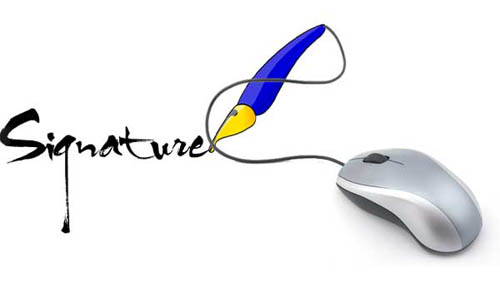
In today’s digital age, the terms “eSignature” and “digital signature” are frequently used when discussing electronic document signing. While they may sound similar, they represent distinct concepts with unique features. Understanding the difference between an eSignature and a digital signature is crucial, especially in legal and business contexts. This article aims to provide a comprehensive explanation of the disparities between the two, shedding light on their functionalities, legal implications, and practical applications in different industries.
What is the Difference Between an eSignature and a Digital Signature?
eSignatures and digital signatures are both methods of signing electronic documents, but they differ in their underlying technologies and legal implications. Understanding the dissimilarities between these two terms is essential to make informed decisions regarding their usage. Let’s explore each concept in detail.
Understanding eSignatures
eSignatures, short for electronic signatures, are digital representations of a person’s intent to sign a document. They allow individuals to sign documents electronically, eliminating the need for physical signatures. eSignatures can be used for a wide range of documents, including contracts, agreements, consent forms, and more.
Key Features of eSignatures
eSignatures offer several key features that make them popular in today’s digital world:
- Convenience and Efficiency: With eSignatures, signing documents becomes quick and convenient. It eliminates the need for printing, scanning, and faxing, saving time and effort.
- Accessibility: eSignatures enable remote signing, allowing parties to sign documents from anywhere in the world, eliminating the need for physical proximity.
- Audit Trail: eSignatures often include an audit trail that tracks the entire signing process, capturing details such as the signer’s identity, timestamp, and IP address, providing a robust record for future reference.
- Authentication Methods: Various authentication methods, such as username-password combinations, SMS verification, or email verification, can be used to ensure the signer’s identity and prevent unauthorized access.
Applications of eSignatures
eSignatures find applications in various industries, including:
- Legal: Law firms and legal departments can use eSignatures to streamline document signing processes, ensuring faster turnaround times and reducing administrative burdens.
- Business and Finance: eSignatures simplify contract signing, vendor agreements, financial transactions, and other business-related documents, enhancing efficiency and reducing paperwork.
- Healthcare: eSignatures facilitate patient consent forms, medical records, insurance claims, and other healthcare-related documents, enabling healthcare providers to digitize their workflows.
- Real Estate: Real estate agents and property managers can utilize eSignatures for lease agreements, purchase contracts, and other real estate transactions, enabling faster and smoother processes.
- Government and Public Sector: Governments and public institutions can adopt eSignatures to digitize administrative processes, such as permits, licenses, and official documentation, enhancing citizen services.
- Education: Educational institutions can leverage eSignatures for enrollment forms, consent forms, and other administrative paperwork, reducing manual handling and improving administrative efficiency.
Understanding Digital Signatures
Digital signatures are cryptographic mechanisms that provide a high level of security and authenticity to electronic documents. They utilize encryption techniques to create a unique digital fingerprint for a document, ensuring its integrity and verifying the identity of the signer.
Key Features of Digital Signatures
Digital signatures possess several distinctive features that make them a preferred choice for highly secure transactions:
- Integrity: Digital signatures ensure the integrity of the signed document by creating a unique hash value that changes if any alteration is made to the document after signing.
- Non-Repudiation: Digital signatures provide non-repudiation, meaning that the signer cannot deny their involvement in signing the document, as their identity is securely linked to the signature.
- Verification: The recipient of a digitally signed document can easily verify the signature’s authenticity using the signer’s public key and the document’s associated digital certificate.
- Tamper Evidence: Digital signatures make it evident if any unauthorized changes have been made to the signed document, providing an added layer of security.
Applications of Digital Signatures
Digital signatures are widely used in various industries and sectors, including:
- Financial Services: Digital signatures are crucial in financial transactions, such as online banking, stock trading, loan agreements, and investment management, ensuring secure and authentic transactions.
- Intellectual Property: Digital signatures help protect intellectual property rights by securing documents related to patents, trademarks, copyrights, and other legal instruments.
- Supply Chain Management: Digital signatures enable secure electronic transactions between different entities in the supply chain, such as purchase orders, shipping manifests, and delivery receipts.
- Government and Defense: Governments and defense organizations rely on digital signatures for secure communication, authentication of official documents, and electronic filing of legal paperwork.
- Healthcare and Pharmaceuticals: Digital signatures play a vital role in ensuring the integrity and authenticity of electronic medical records, prescription orders, clinical trial documentation, and drug distribution processes.
- Information Technology: Digital signatures are used in software distribution, code signing, secure email communication, and other IT-related transactions, ensuring data integrity and trust.
Comparing eSignatures and Digital Signatures
While both eSignatures and digital signatures involve signing electronic documents, they differ in several aspects. Here’s a comparison between the two:
| Features | eSignatures | Digital Signatures |
|---|---|---|
| Legal Framework | Governed by specific eSignature laws and regulations. | Governed by digital signature laws and frameworks. |
| Security | Relies on authentication methods and audit trails. | Utilizes cryptographic algorithms for enhanced security. |
| Authentication | Relies on username-password combinations, SMS verification, or email verification. | Utilizes public-key cryptography and digital certificates. |
| Non-Repudiation | Less stringent non-repudiation compared to digital signatures. | Provides strong non-repudiation, ensuring signer accountability. |
| Applications | Broad range of applications in various industries. | Primarily used in high-security transactions and legal contexts. |
Legal Validity of eSignatures and Digital Signatures
The legal validity of both eSignatures and digital signatures varies depending on the jurisdiction and the specific context in which they are used. Several factors influence the acceptance and enforceability of electronically signed documents.
Factors Influencing Legal Validity
- Consent: The signer must demonstrate their intent to sign the document electronically and must be aware of the legal implications.
- Authentication: The identity of the signer must be properly verified using appropriate authentication methods.
- Audit Trail: A comprehensive audit trail should be available, capturing relevant details of the signing process, including timestamps, IP addresses, and other relevant information.
- Compliance: Compliance with applicable eSignature or digital signature laws and regulations is crucial to ensure legal validity.
International Legal Framework
Different countries have enacted specific laws and regulations to govern the use of eSignatures and digital signatures. For instance:
- In the United States, the Electronic Signatures in Global and National Commerce (ESIGN) Act and the Uniform Electronic Transactions Act (UETA) establish the legal framework for eSignatures at the federal and state levels, respectively.
- In the European Union, the eIDAS Regulation sets the standards for electronic identification and trust services, including eSignatures and digital signatures.
- Other countries, such as Canada, Australia, and India, have their own legislation and regulations governing the legal validity of electronic signatures.
eSignature and Digital Signature Standards
To ensure interoperability and trustworthiness, various standards and specifications have been established for eSignatures and digital signatures. Some notable standards include:
- PDF Advanced Electronic Signatures (PAdES): A specification for digital signatures in PDF documents, providing long-term validation and archival features.
- XML Advanced Electronic Signatures (XAdES): A standard for digital signatures in XML-based documents, ensuring data integrity and authenticity.
- CAdES and ASiC: Standards for digital signatures and associated containers, ensuring secure long-term storage and verification.
- Public Key Infrastructure (PKI): A framework that utilizes public-key cryptography and digital certificates to ensure the integrity, authenticity, and confidentiality of electronic documents.
Technologies Used in eSignatures and Digital Signatures
eSignatures and digital signatures leverage various technologies to provide secure and efficient signing capabilities:
- Public-Key Cryptography: Both eSignatures and digital signatures use asymmetric encryption algorithms, such as RSA or ECC, to create key pairs for secure signing and verification.
- Hash Functions: Hash functions like SHA-256 or SHA-3 are employed to generate unique hash values that represent the document, ensuring its integrity.
- Digital Certificates: Digital certificates issued by trusted Certificate Authorities (CAs) help establish the identity of the signer and ensure the authenticity of the digital signature.
- Secure Protocols: Secure protocols like SSL/TLS or HTTPS are used to establish secure communication channels when transmitting signed documents or signature-related data.
Authentication and Security Measures
Both eSignatures and digital signatures incorporate various authentication and security measures to protect the integrity and authenticity of signed documents:
- User Authentication: eSignatures employ username-password combinations, SMS verification, or email verification to verify the identity of the signer. Digital signatures utilize cryptographic keys and digital certificates for signer authentication.
- Secure Storage: To ensure the security of signed documents, robust encryption and secure storage mechanisms are implemented, safeguarding them from unauthorized access or tampering.
- Secure Transmission: When transmitting signed documents, encryption protocols and secure channels are used to prevent interception or tampering during transmission.
Use Cases of eSignatures
eSignatures have become increasingly prevalent across industries due to their convenience and efficiency. Here are some notable use cases:
- Contract Signing: Organizations can use eSignatures to streamline contract signing processes, reducing the time and costs associated with physical paperwork.
- Agreements and Consent Forms: Consent forms, non-disclosure agreements, and other types of agreements can be easily signed using eSignature solutions.
- Employee Onboarding: eSignatures facilitate the onboarding process by allowing new employees to sign employment contracts, policy agreements, and other necessary documents remotely.
- Financial Transactions: Banks, insurance companies, and other financial institutions utilize eSignatures to enable secure and efficient digital transactions, such as opening accounts, applying for loans, and authorizing transactions.
- Customer Service: Customer-facing operations, such as accepting terms and conditions or authorizing service agreements, can be streamlined with the use of eSignatures.
Use Cases of Digital Signatures
Digital signatures, with their high level of security and integrity, find applications in numerous industries. Here are a few notable use cases:
- Legally Binding Documents: Digital signatures ensure the authenticity and integrity of legally binding documents, including contracts, deeds, and other important legal paperwork.
- Government and Regulatory Documents: Government agencies and regulatory bodies often rely on digital signatures for secure communication, filing official paperwork, and ensuring document authenticity.
- Financial Transactions and Compliance: Digital signatures play a crucial role in financial transactions, compliance reports, tax filings, and other high-stakes financial activities.
- Secure Email Communication: Digital signatures help verify the integrity and authenticity of email communication, ensuring that the sender’s identity is verified, and the message remains unaltered.
- Software Distribution and Code Signing: Digital signatures are used to sign software applications and code to ensure their integrity and protect against unauthorized modifications or tampering.
eSignature and Digital Signature Integration
In many scenarios, eSignatures and digital signatures are not mutually exclusive but rather complement each other. Integration between the two can offer enhanced security, convenience, and legal validity. Organizations can adopt hybrid solutions that leverage both eSignatures and digital signatures based on specific requirements and compliance needs.
Choosing Between eSignatures and Digital Signatures
The choice between eSignatures and digital signatures depends on factors such as the level of security required, legal implications, industry-specific regulations, and the specific use case. It’s essential to evaluate the needs of your organization or business and consider the applicable laws and regulations to make an informed decision.
The Future of eSignatures and Digital Signatures
As digital transformation continues to reshape industries, the adoption of eSignatures and digital signatures is expected to grow. Advancements in technology, such as blockchain-based signatures and biometric authentication, will further enhance the security and efficiency of electronic document signing. Organizations across various sectors will increasingly rely on these technologies to streamline processes, reduce paperwork, and improve overall operational efficiency.
FAQs about eSignatures and Digital Signatures
What is an eSignature?
An eSignature refers to a digital representation of a person’s intent to sign a document electronically. It eliminates the need for physical signatures and offers convenience and efficiency in document signing processes.
Are eSignatures legally binding?
Yes, eSignatures are legally binding in many countries, including the United States, as long as certain requirements, such as consent, authentication, and audit trails, are met.
What is a digital signature?
A digital signature is a cryptographic mechanism that provides a high level of security and authenticity to electronic documents. It ensures the integrity of the document and verifies the identity of the signer.
Are digital signatures more secure than eSignatures?
Yes, digital signatures offer a higher level of security compared to eSignatures. They utilize encryption techniques and digital certificates to ensure document integrity and non-repudiation.
Can eSignatures and digital signatures be used interchangeably?
While eSignatures and digital signatures serve similar purposes, they have distinct differences. The choice between the two depends on factors such as security requirements, legal implications, and industry-specific regulations.
How do eSignatures and digital signatures benefit businesses?
Both eSignatures and digital signatures offer numerous benefits to businesses, including faster turnaround times, reduced paperwork, improved operational efficiency, and enhanced security and compliance.
Conclusion
In conclusion, understanding the difference between an eSignature and a digital signature is crucial in today’s digital landscape. While eSignatures provide convenience and efficiency in document signing processes, digital signatures offer a higher level of security and integrity. Both have their unique features and applications in various industries. By leveraging the appropriate technology based on specific needs and compliance requirements, organizations can streamline their document signing processes, enhance security, and ensure legal validity in electronic transactions.




